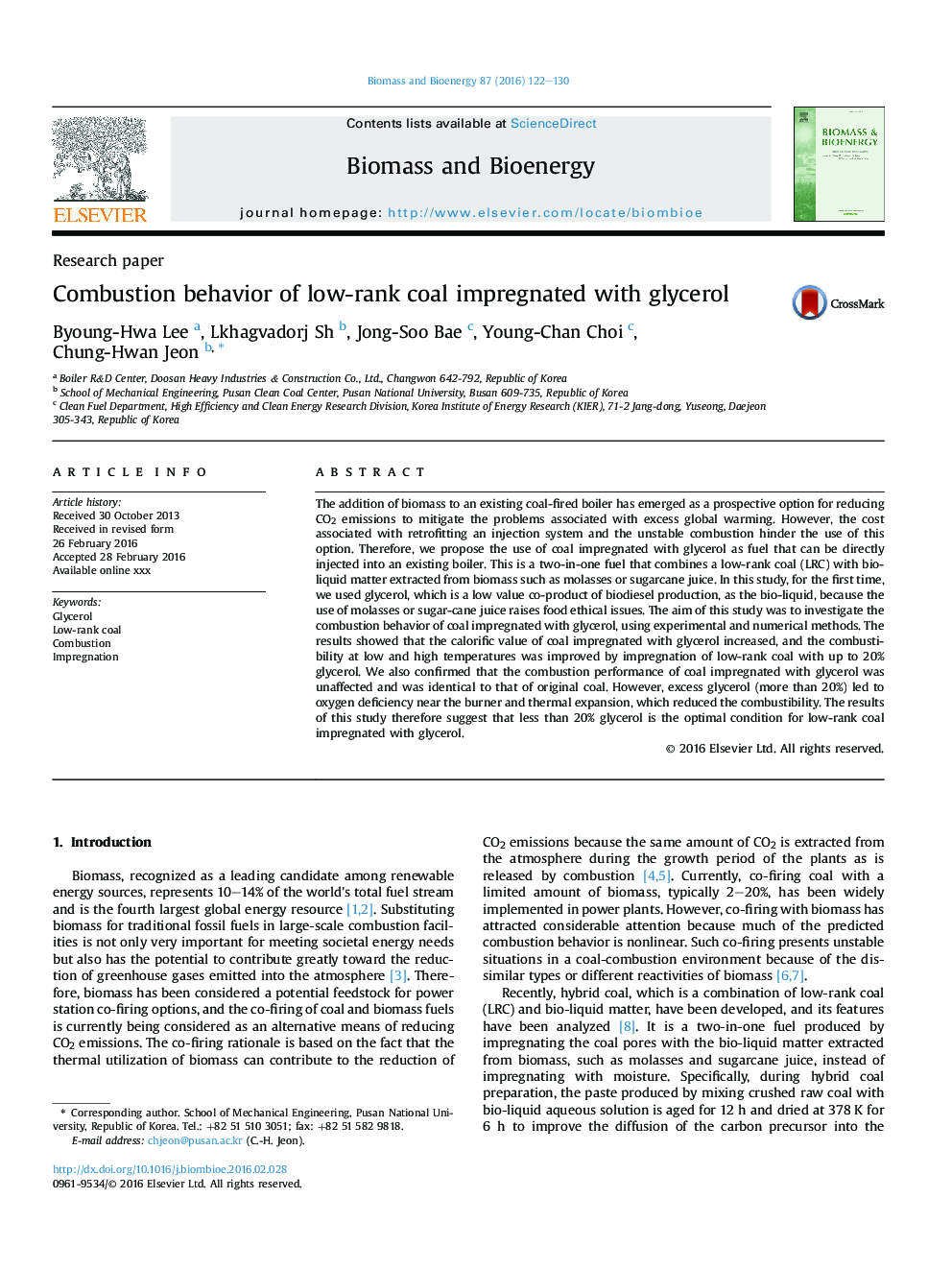| Article ID | Journal | Published Year | Pages | File Type |
|---|---|---|---|---|
| 7063402 | Biomass and Bioenergy | 2016 | 9 Pages |
Abstract
The addition of biomass to an existing coal-fired boiler has emerged as a prospective option for reducing CO2 emissions to mitigate the problems associated with excess global warming. However, the cost associated with retrofitting an injection system and the unstable combustion hinder the use of this option. Therefore, we propose the use of coal impregnated with glycerol as fuel that can be directly injected into an existing boiler. This is a two-in-one fuel that combines a low-rank coal (LRC) with bio-liquid matter extracted from biomass such as molasses or sugarcane juice. In this study, for the first time, we used glycerol, which is a low value co-product of biodiesel production, as the bio-liquid, because the use of molasses or sugar-cane juice raises food ethical issues. The aim of this study was to investigate the combustion behavior of coal impregnated with glycerol, using experimental and numerical methods. The results showed that the calorific value of coal impregnated with glycerol increased, and the combustibility at low and high temperatures was improved by impregnation of low-rank coal with up to 20% glycerol. We also confirmed that the combustion performance of coal impregnated with glycerol was unaffected and was identical to that of original coal. However, excess glycerol (more than 20%) led to oxygen deficiency near the burner and thermal expansion, which reduced the combustibility. The results of this study therefore suggest that less than 20% glycerol is the optimal condition for low-rank coal impregnated with glycerol.
Related Topics
Physical Sciences and Engineering
Chemical Engineering
Process Chemistry and Technology
Authors
Byoung-Hwa Lee, Lkhagvadorj Sh, Jong-Soo Bae, Young-Chan Choi, Chung-Hwan Jeon,
